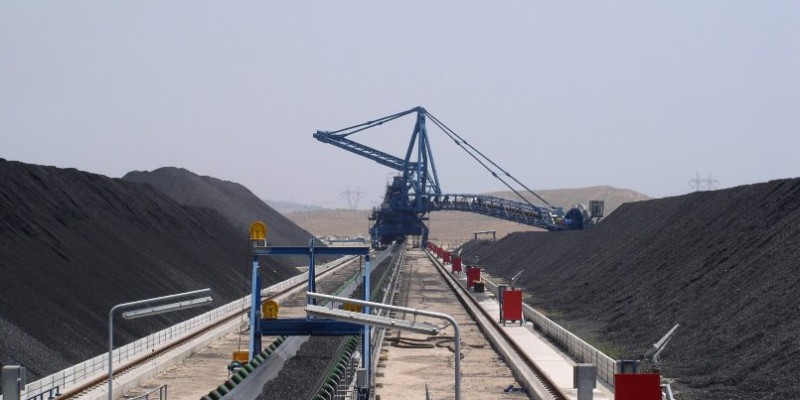Material handling equipment is mechanical hardware utilized for the development, stockpiling, control and security of materials, merchandise and items all through the way toward assembling, circulation, utilization and transfer.
Design of Material Handling Systems:
A typical way to deal with the configuration of MH frameworks (MHSs) is to consider MH as an expense to be minimized. This methodology might be the most proper by and large in light of the fact that, while MH can increase the value of an item, it is normally hard to distinguish and evaluate the advantages connected with MH; it is much less demanding to recognize and measure the expenses of MH (e.g., the expense of MH hardware, the expense of aberrant MH work, and so forth.). Once the outline of a creation procedure (restrictive of MH contemplations) is finished, substitute MHS plans are created, each of which fulfills the MH necessities of the generation procedure. The minimum cost MHS outline is then chosen. Different types of material handling equipment:
- Transport Equipment
- Cranes
- Conveyors
- Truck loading
- Industrial trucks
- Rail loading
- Bagging
- Ship loading
- Positioning Equipment
- Unit Load Formation Equipment
- Storage Equipment
- Covered/open stockpiles
- Open silos
Material Handling System Conveyer and Stacker :
Conveyors:
Conveyors are utilized when material is to be moved every now and then between particular focuses over an altered way and when there is an adequate stream volume to justify the fixed conveyor investment. Diverse sorts of conveyors can be described by the kind of item being taken care of: unit load or mass load; the conveyor’s area: in-floor, on-floor, or overhead, and regardless of whether burdens can collect on the conveyor. Amassing permits discontinuous development of every unit of material transported along the transport, while all units move at the same time on conveyors without collection capacity. For instance, while both the roller and level belt are unit-load on-floor conveyors, the roller gives amassing ability while the level belt does not; comparably, both the force without and trolley are unit-stack overhead conveyors, with the force sans and intended to incorporate an additional track so as to give the collection capacity ailing in the trolley conveyor. Instances of bulk-handling conveyors incorporate the attractive belt, troughed-belt, pail, and screw transports. A sortation conveyor system is utilized for consolidating, recognizing, enlisting, and isolating items to be passed on to particular goals, and normally comprises of level belt, roller, and chute conveyor fragments together with different moveable arms and/or pop-up haggles that redirect, push, or draw items to various goals.

Belt Coal Handling System

Coal Handling System
Stacker:
Stacker is a substantial machine utilized as a part of mass material taking care of. Its capacity is to heap mass material, for example, limestone, minerals and oats on to a stockpile. A recovered can be utilized to recoup the material.
Stackers are ostensibly appraised for limit in tons every hour (tph). They regularly go on a rail between stockpiles in the stockyard. A stacker can for the most part move in no less than two bearings: evenly along the rail and vertically by luffing (raising and bringing down) its blast. Luffing of the blast minimizes dust by lessening the separation that material, for example, coal needs to tumble to the highest point of the stockpile. The blast is luffed upwards as the stature of the stockpile increments. A few stackers can turn the blast. This permits a solitary stacker to shape two stockpiles, one on either side of the transport.
Stackers are utilized to stack in various examples, for example, cone stacking and chevron stacking. Stacking in a solitary cone tends to bring about size isolation, with coarser material moving out towards the base. In crude cone handle stacking, extra cones are added by the principal cone. In chevron stacking, the stacker goes along the length of the stockpile including endless supply of material.
Stackers and Reclaimers were initially physically controlled, without any method for remote control. Advanced machines are commonly self-loader or completely computerized, with parameters remotely set. The control framework utilized is commonly a programmable rationale controller, with a human-machine interface for showcase, associated with a focal control framework.
Other than stacking, a stacker has three essential developments:
- Luffing:This is vertical development. Stackers utilize either a winch component with metal wire, or water powered barrels, for the most part two. Winch systems are profoundly solid contrasted with pressure driven actuators and remain generally utilized, especially in expansive stackers.
- Travelling: The stacker proceeds onward a rail track, which might be wide or slender gage, empowering it to move around the stockyard as required. For this reason, footing engines controlled by direct present (DC) are associated by incline apparatuses to somewhere around 12 and 22 wheels. For manual control, every one of the controls are in a controller’s lodge over the blast transport or blast. Cutting edge stackers can be controlled remotely.
- Slewing: This is turn of the stacker around its focal hub to adjust or put the stockpile where required. This works for the most part by a huge number pinion that pivots around a large number base. This kind of apparatus get together is known as a sun and planet gear. The axles might be different and are driven by DC-fueled hub engines which transmit the torque by means of incline or helical apparatuses.




